Hollies are a wonderful addition to any landscape, dense evergreen foliage, beautiful red berries, many types to choose from. With so many varieties of ornamental holly trees and shrubs, it can be difficult to make an educated choice of what to put in your landscape. After all there is a lot to consider, how easy is it to replace if something happens to one, how well does it perform in the area, is it tolerant enough for the hot summers and cold wet winters in Northwest Arkansas, the wrong choice could end up costing you both time and money. We have grown and sold many different types and varieties of holly over the years, the following are among the best performers in Northwest Arkansas.
Shrubs
Soft Touch Compact Japanese Holly
Ilex crenata ‘Soft Touch’
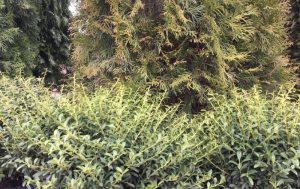
Example of a Soft Touch Holly
The Soft Touch, is a small, rounded, compact variety, 2 to 3 feet wide and as tall, with dense glossy green foliage. It features black ornamental berries from the fall and throughout the winter months. Its compact size and rounded habit makes it a good choice for borders or as an accent plant.
Pros
Cold hardy to zone 5, this little holly is tough enough for our cold winters. It is also very heat tolerant and can thrive even in the hottest month of Northwest Arkansas summer, with a regular watering schedule. While it prefers moist, well-drained soil, the soft touch is highly adaptable to a variety of soil conditions, which is a good thing considering the high clay content in this area. This popular little evergreen shrub, is a common staple among most plant nurseries and garden centers in the area, so it is easy to replace one if need be. This nice little shrub requires little maintenance to keep its nice rounded shape.
Cons
While the Soft Touch Holly, is heat tolerant enough for our hot summers, it will need to be on a watering schedule for those months in order to thrive, even when established. Further, sitting in waterlogged soil, can create problems leading to disease and the loss of the plant if not careful. Once this compact little plant loses some of its foliage, it can be unsightly and may never fully recover and fill back in, often needing replaced. The Soft Touch also require some pruning to maintain its shape.
Heller’s Japanese Holly
Ilex crenata ‘Helleri’
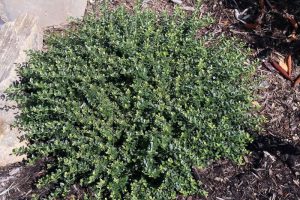
Heller’s Holly in the Landscape
Another tried and true selection, Heller’s Holly features an abundance of dense, dark, glossy green foliage in a small mounding habit. New growth appears from the top and has a lovely arching form. Black berries appear in the fall and often persist throughout the winter months. This little shrub is a true low maintenance plant, as it keeps its tidy habit without the need for shaping or pruning.
Pros
The Heller’s Holly grows in USDA cold hardiness zones, 6-9, meaning that for our area, Northwest Arkansas, zone 6B, it is very heat tolerant. This tidy, evergreen shrub can thrive in our warm summer months without much maintenance, it is also highly adaptable for a wide variety of soils and will survive in the clay commonly found in this area. No need to prune, the Heller’s Holly keeps its nice shape without any effort at all. Heller’s Holly is a common staple amongst wholesale nurseries and is usually available in most garden centers. It is also less expensive than newer patented varieties.
Cons
While this little holly is very heat tolerant, it’s not as cold hardy. When established it will likely be able to withstand most of our winters, a sudden cold snap or unusually cold winter, which can happen here, can cause it to die.
Dwarf Yaupon Holly
Ilex vomitoria ‘Nana’
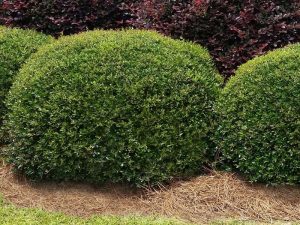
Dwarf Yaupon in the Landscape
This tidy, little, North American native, holly features a dense, rounded habit, maturing at 3 to 5 feet tall and slightly wider. It is known for keeping its symmetrical shape without the need of any maintenance. It grows in coastal regions of Virginia, as far south as Florida and Texas, yet is also found along the Mississippi in Arkansas. New growth appears from the top on dark purple stems, red berries appear in the fall and often persist into winter.
Pros
The Dwarf Yaupon has grown in the wild throughout the entire state of Arkansas long before the first colonies arrived on the shores of North America, and will thrive in a wide variety of soils without any complaints. It is a common, non-patented variety that is inexpensive and easy to come by, not to mention very attractive!
Cons
While the Dwarf Yaupon will thrive during the hot summer months Northwest Arkansas is known for, we are on the top of it’s habitable zone, meaning that a very cold winter could cause some die out. Further if kept in containers, these guys will need to come inside during extreme weather to protect their roots from freezing.
Compact Japanese Holly
Ilex crenata ‘Compacta’
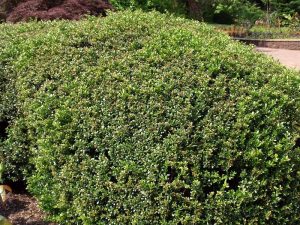
Compact Holly in the Landscape
Often referred to as the Compact or Compacta Holly, this attractive, dense, rounded, slow-growing, shrub can reach 6 feet tall and as wide, making it an ideal replace for boxwood. Very little pruning is needed to keep their natural globe shaped habit, they are an excellent choice as a corner accent, but can be planted and maintained as a hedge.
Pros
The Compact Holly is cold hardy from zones 6 to 9, making them extremely heat tolerant for the hot summer months that Northwest Arkansas is known for. This low maintenance shrub, easily keeps its shape with very little pruning, allowing it to keep it’s neat appearance throughout the year.
Cons
While the Compact Holly tolerates the heat in Northwest Arkansas, being at the top of its cold hardiness zones, Northwest Arkansas is zone 6B, the occasional very cold winters can pose a threat especially to unestablished plants. Further this holly’s heat tolerance does not necessarily mean drought tolerant and it does require regular watering during the hottest summer months.
Dwarf Burford Holly
Ilex cornuta ‘Dwarf Burford’
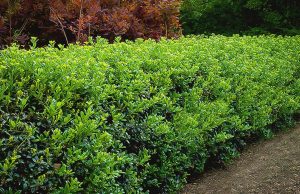
Dwarf Burford Holly Hedge
The Dwarf Burford is a compact, mounded shrub growing 4 to 6 feet tall and as wide. Dense, glossy, green foliage is adorned with copious amounts of large, bright red berries throughout the year. This slow growing, medium sized, shrub makes the perfect natural hedge, and only needs annual pruning for a neat, tidy appearance.
Pros
Cold hardy from zones 7 to 9, make this lovely holly extremely tolerant of the hot summers in Northwest Arkansas. Additionally it does not require a pollenizer for berry production, making it truly special and incredibly beautiful as a hedge of green adorned with red berries! Additionally the Dwarf Burford Holly does well in both full and partial sun, making it very adaptable in the landscape. This common, non-patented, proven, variety is easy to comeby, in-expensive and requires very little maintenance to keep in check.
Cons
The Dwarf Burford, does have one big drawback, since it is only cold hardy to zone 7, unestablished plants tend to not fair well during the coldest of the winter months here in Northwest Arkansas. Even established plants can struggle in prolonged periods of cold. Covering them during these rare times does help to keep them alive.
Keep an eye out for part two, featuring Holly Trees!

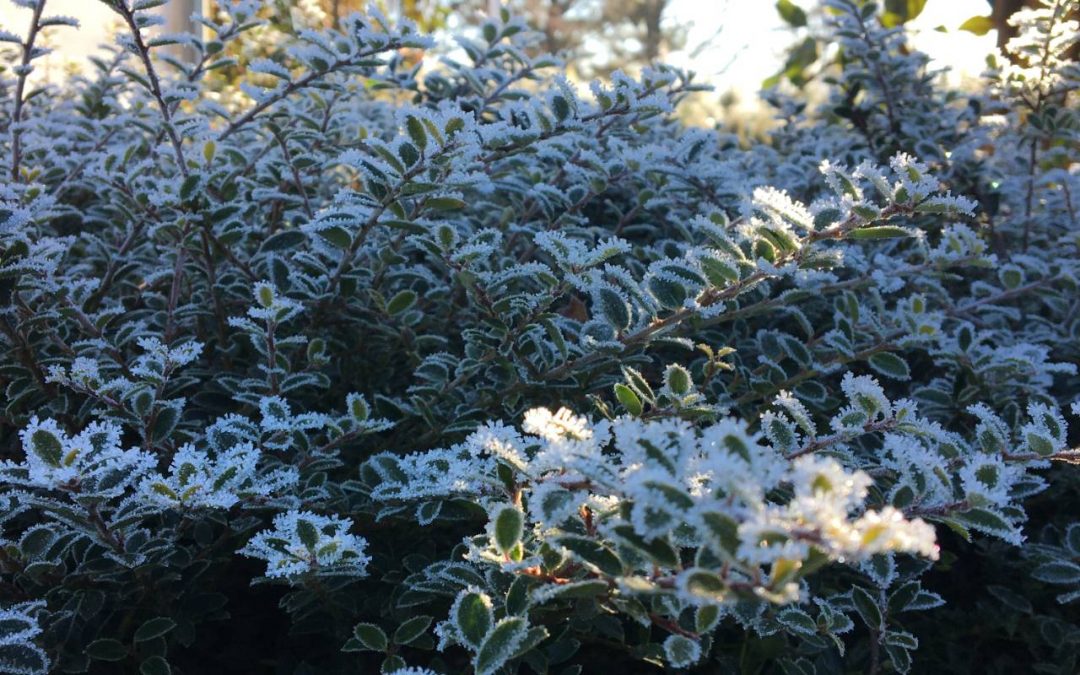
Recent Comments